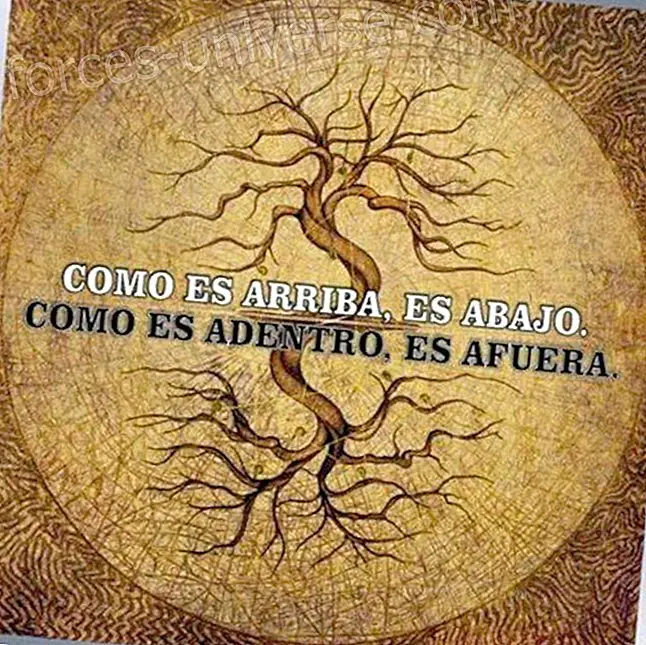
Among the oldest and most enigmatic cultures, Egyptian civilization is one of the most interesting, because not only does its architecture continue to amaze archaeologists, but it also hides many initiatory mysteries, which influenced sages from other cultures such as the Greeks or even the Hebrews. It is already said that the wise Pythagoras, as well as Thales of Miletus; they had their initiations in the core of the Egyptian civilization.
Origins of the Egyptian civilization

It is interesting to note that the Egyptian civilization in its pre-dynastic era (copper age), they were known as the "Hamitic race", a term that made it assert that their name and descent should be distinguished from the Semitic branch, because it came from Ham or Cam, different from Sem.
Now, Egyptian scholars have determined that primitive Egyptians were the mixture of different races, having large infiltrations of Semites and Mediterranean Libyans, in addition to these foreign characters, also instituted or participated in public life with influence within the dynasties. The story of the Hebrew genesis (bereshit) on this subject is already clear; when Yosef, a descendant of Jacob becomes vice-pharaoh of Egypt, later that his brothers sold him as a slave long ago.
However, the native people were made up of fellahs, or peasants who were from the pre-Dynastic era until the later stages of the "Egyptian Empire." During all these times, these Egyptian peasants praised the Nile River and its benefits, whose annual flood; it favored with its humidity the fertilization of the field and the agricultural works. Likewise, the Egyptians encrypted and constituted great mythological archetypes that impacted the collective spirit in their famous hieroglyphs, these images being rudimentary for the communication and transmission of knowledge.
Egyptian civilization religion

Within the Egyptian civilization, there was a complex belief system about reality, attributing divine qualities to nature, especially a hylozoistic character, dominated by a god. That is, they believed that every element, property and phenomenon of nature, was divine and inspired by a god.
In this way, the Egyptian civilization, understood and assigned a deity to phenomena such as: the sun (represented by the god Ra ), the processes of transformation and resurrection ( god Osiris ), life ( goddess Isis ), the sky ( Horus ), the desert and the darkness, represented by the god Seth, who also personified evil.
Also within its belief system, the practice of mummification was transcendental, it was preceded by the god Anubis, who was the guard who accompanied the disembodied by the etheric worlds. It is usually symbolized with the head of a jackal (or wild dog) and pulling a bow, a symbol of action and reaction, the inescapable destiny of life: death .
It should be noted that the most important trinity of gods for Egyptian civilization, is made up of Osiris, Isis and Horus . The first is the god who dies and is resurrected, so it symbolizes the cycle of transformations between death and rebirth. While Isis, is the sister and wife of Osiris, which symbolizes the feminine principle of all of nature, whose strength is life itself. Finally, Horus is the son of these two. and is often represented by an eye that represents the righteous gaze on evil (seth).
Brief approach to the Egyptian Initiation:

It is said that within the Egyptian civilization initiation practices were made in the great pyramid . It should be noted that the initiation, refers to the set of esoteric activities that mark a before and after in the psychic and inner life of the person, that is why it is a transition of the spirit towards higher levels of understanding.
According to the Egyptologists, the great pyramid constituted the tombs of the pharaohs. Esoterically, however, the pyramid represents the human body, so it could be interpreted that it is the tomb of the inner god, who has fallen asleep in the inner pyramid, that is: the body physical. It is interesting to note that this word comes from the prefix Pyr , which means fire. This element is associated with the spirit. In this sense, the Egyptian initiation referred to the search for the spirit within itself.
Author: Kevin Samir Parra Rueda, editor in the big family of hermandadblanca.org
More information at:
- Adaoum, J. (1999). The apprentice and its mysteries . Buenos Aires, Argentina: Kier editorial.
- Chevaler, J. (1986). Dictionary of symbols . Barcelona, Spain: Editorial Herder.
- Pijoan, J. (1982). World history. I take . Barcelona, Spain: Salvat Editores. SA






